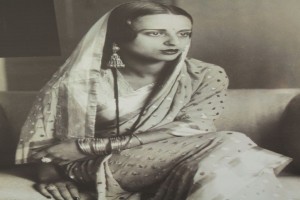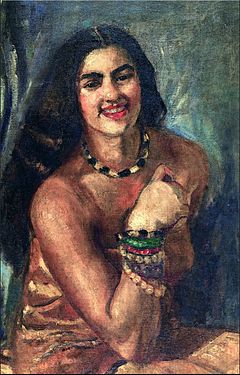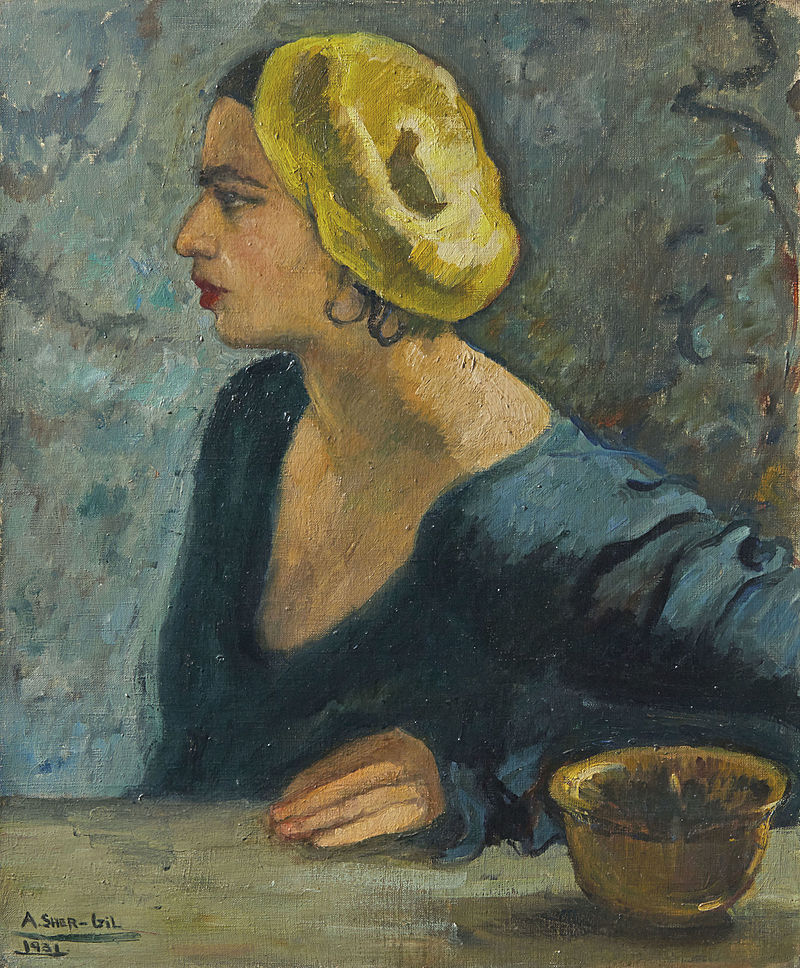
Photo by अनजान probably Umrao Singh Sher-Gil
Feature
 By Amit Srivastava
By Amit Srivastava

I stumbled upon the name of Amrita Sher-Gil sometime during my high school days. It was a small reference somewhere. A pretty female painter in mountains living in the mountains way back in the 1930s . It all sounded obscure and mysterious – a beautiful painter trying to reach out to the current generation like rays of light filtering out from the dark veil of time. She was an enigma then and she is an enigma now.

Discovery of a fascinating piece of art sometimes triggers a quest for search for more information about the artist. However, In the case of Amrita, it was the mystery and the irresistible charm of her personality that led me to find out about her life, he relationships and her paintings. There were so facts of her life which make her an unique personality at that junction of time. She was born of Hungarian – Indian parentage. In 1920s she went to Paris at a young age of sixteen years and excelled in artwork. She chose to come to India and adopted Indian themes and styles in her paintings. She was an irresistible charm in the social circles and led her life at her own terms.. Her artwork reached a high level of maturity but her life was cut short with her death in 1941. Perhaps it is her untimely death at such a young age that has made her memory deathless.

There is so much more to learn and discover about her life and paintings. I think she was born to fulfill a specific role at that crucial juncture of time. The progression of her art was from western to Indian. She forms an important link between the two diverse art forms. Her striving to seek and incorporate her Indian roots is also significant in this regard.
She broke many barriers and stereotypes as a woman. Leading her life at her own terms way back in 1930s was no mean task. But Amrita was not born to compromise her views at the altar of social norms. Her story is quite an unusual one.
It was during the Covid lockdown period I got a chance to purchase a book on Amrita Sher-Gil . By the time one finishes the book, one is enveloped in a pall of sadness at the untimely demise of the beautiful personality. It is sad to see the strange paradox of time. Her paintings now sell at a couple of millions of dollars but when she was alive she struggled constantly to secure some financial stability in her life by selling her paintings. Although she was a recipient of several awards at young age at different international art forums but her paintings didn’t sell in India as she her ideas and style were too much ahead of time. Indian art lovers and intelligentsia were not so much aware of the modern art movement and could not appreciate the paradigm shift she brought on to the art scene with her representation of women. Her style was a stark contrast to the other popular painter before her – Raja Ravi Varma. While his paintings focused on sensuality and the romanticized image of women as seen from a male eye, women in Amrita’s her painting were real as human beings with all desires, frustrations and possessing tremendous individuality. Her brushstrokes liberated them from being just adornments on the wall representing nothing but beauty.
She was such a strong personality and she added the same touch to her creations.
I am fond of all her self- portraits. Her self- portraits mirror the real Amrita in so many ways- charming strong, unabashed and brutally honest in all the emotions they convey. She doesn’t hold back.
(To continue)





